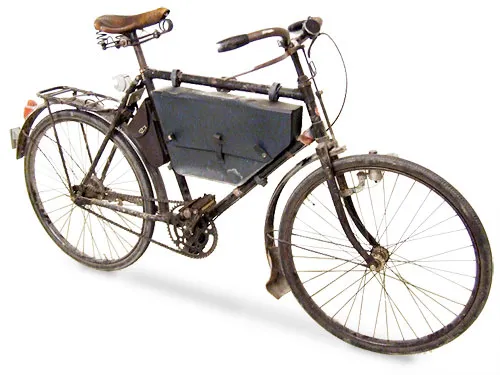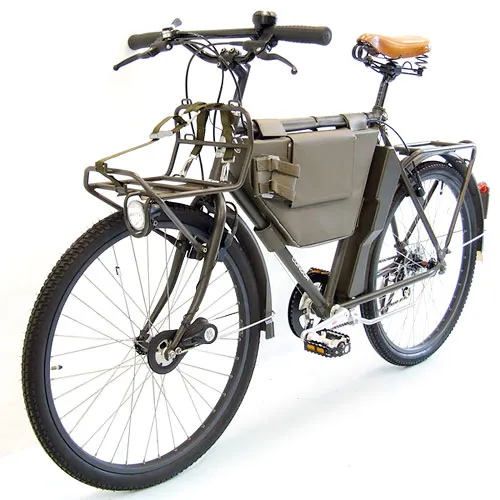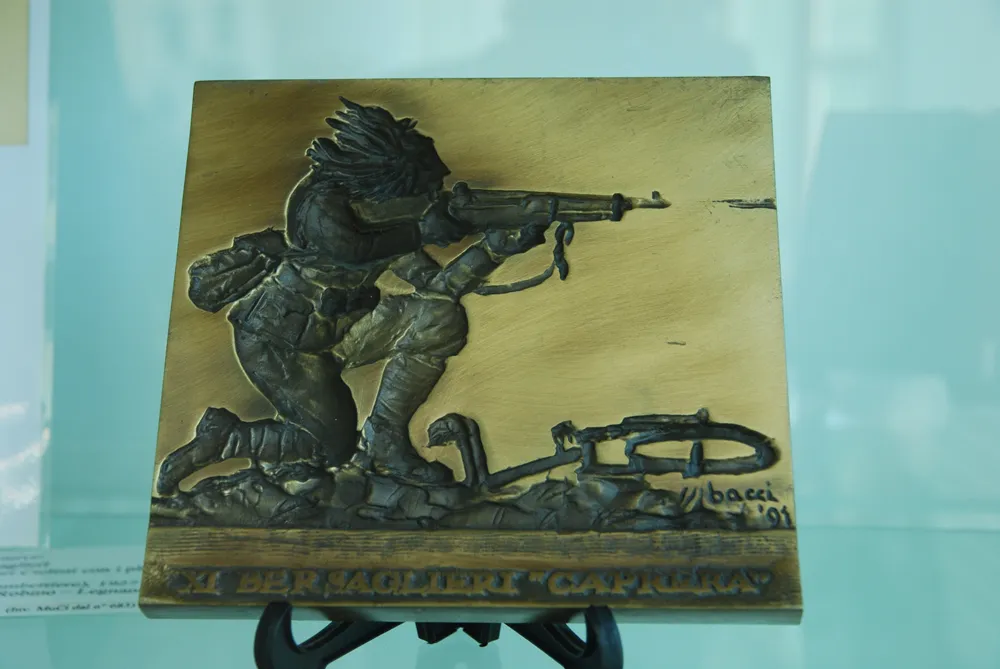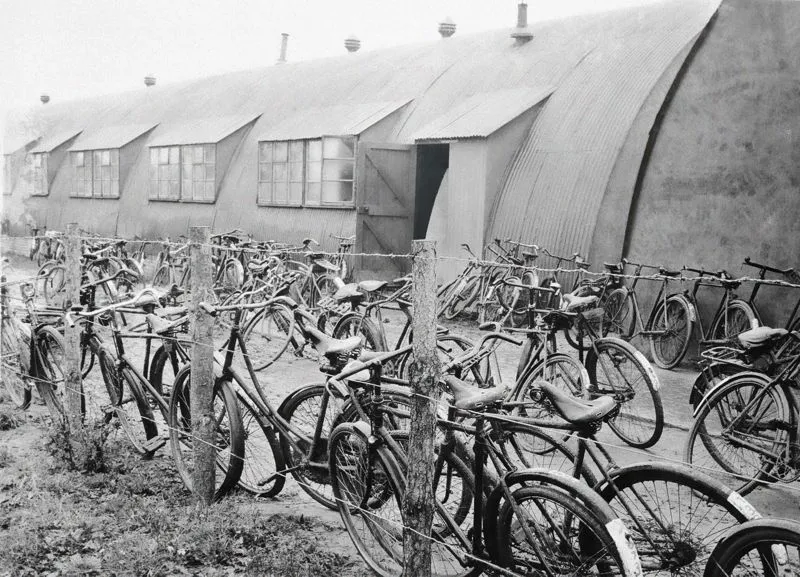Bicycling has a long and colorful history in sport, but it is often forgotten that the bicycle has also been long used by military forces around the world.
One of the earliest was the “ordinary bicycle,” today known as the penny-farthing. These featured a tall front wheel and were known for being a bit difficult and even dangerous to ride, and were novelties for the wealthy that no proper lady would ever consider riding, but these did introduce the French to their love affair with the bicycle. These bikes were tested by the military for dispatch riders and scouts during the Franco-Prussian War of 1870-71.
The conflict, which brought down the French Emperor Napoleon III, also destroyed the first fledgling French bicycle industry. However, development progressed in Great Britain and even in the United States, where advances included a chain-driven system that allowed for a more stable riding platform. It was English inventor John Kemp Starley who followed on this development, and produced the world's first successful “safety bicycle,” which was called the Rover and released in 1885. It featured a design that would be recognizable even today - with a steerable front wheel, equally sized front and back wheels and drive chain to the rear wheel. The safety bike concept caught on during the 1890s and many military thinkers saw its potential.
According to The Bicycle in Wartime: An Illustrated History by Jim Fitzpatrick (Brassey's Inc., 1998) the late 1880s and 1890s saw many nations experiment with bicycles. The Austrians and Germans each looked into the possibilities, but it was the French army that formally introduced bikes into service in July of 1887. However, the British may have beaten their continental rivals to the finish line. According to Fitzpatrick the British used cyclists as scouts during field maneuvers in the Easter exercises of 1885.
The Americans soon followed suit as various National Guard regiments experimented with bicycles. The First Signal Corps of the Connecticut National Guard was the first American force to have a formal military bicycle unit, which it formed in 1891. The bicycle was used by messengers and relay riders, and the United States military took on various challenges - one Connecticut National Guard cyclist proved he alone could deliver a message faster than an entire flag signaler team, while a relay team carried a single dispatch from Chicago to New York City in just four days and 13 hours, with much of it in rainy weather. A follow-up challenge brought a message from Washington, D.C. to Denver in just over six days. Clearly the bicycle could deliver, but it still had to prove its place in war conditions.
Bicycles Ride to War
Various nations conducted tests to see if a bicycle could be used as actual gun platforms, and the 1890s saw a series of strange designs, including sidecar mounted early machine guns, and side-mounted rifles that could be fired from the handlebars. As these were prototypes and not surprisingly failed to go very far past proof of concept, few - if any - of these early bikes survive, even in museums today.
While the bicycle was unable to be transformed into a new type of weapon of war, some nations instead looked to see if tactics could be devised to use the bike in combat. This begat the first practical study of tactics for bicycle riders, and it is widely accepted that it was during the Second Anglo-Boer War in South Africa (1899-1901) that the bicycle was first used in an actual conflict. Cycles were used by messengers, adapted into portable stretchers and even used as a part of a specially devised two-man cycle to patrol the railroads. The bike had been tested in battle, and it looked as if it would find a place in future wars.
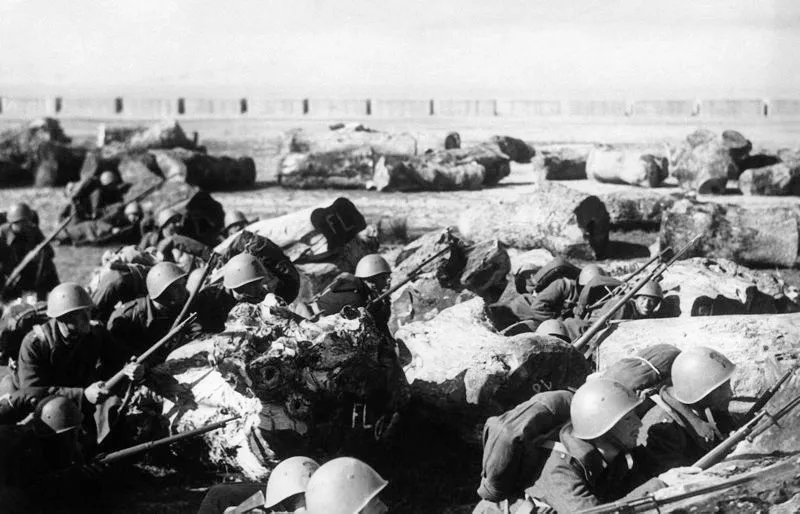
After landing in Albania, WWI Italian troops pushed inland on bicycles
However, it was not to be a front-line bike. The First World War, which had began as a very mobile and fluid conflict at first did seemed to be ideal for bicycles. Both sides used a large number of bikes to help troops get to the front lines quickly, but as the war bogged down into the hellish nightmare of trench warfare the two-wheel machines were relegated to rear echelon duty. Cycles were used to some degree by sharpshooters in less static areas, as well as by scouts and of course dispatch riders.
A generation after the trench warfare of the First World War, the outbreak of war in Europe and Asia put the cycle back in the field. The German Army, even during its rapid-moving blitzkrieg still relied on horse-drawn carriages to transport men and equipment, and bicycles too played a part. Moreover, wartime shortages throughout World War II also resulted in many nations utilizing the bicycle to save on fuel. This was especially true in isolated Great Britain during the Blitz, and followed even after the Yanks arrived in great numbers. The United States, which was also on wartime rationing, used bikes in great numbers, but ironically for collectors, few of the American bikes have survived the war.
“I know of only a handful of real 'left-behind' bikes in Europe,” said collector Johan Willaert. “I think they were used much more at U.S. camps and airfields than in Europe.”
Even more collectible today are those made by the Empire of Japan. Today the Japanese bicycle industry can even trace its roots to those bikes made during the war, where they also learned to adapt. As rubber was in short supply, it is reported that Japanese soldiers learned to ride on the rims when the tires went flat and couldn’t be patched.
After the Second World War the civilians were the ones who had to adapt and overcome, and many of the wartime bikes passed to civilian hands as the world recovered from the horrors of the war. This was especially true in Europe, where fuel was still hard to get and where there had been an existing bike culture.
“Bicycles have been a part of European history and culture for many, many years,” says Willaert. “For ages the bicycle has been a means of everyday transport for thousands of people, especially in Belgium and the Netherlands. The bicycle was a cheap and easy means of transport for people who couldn't afford a car for decades.”
As the bicycle transformed to a means of transport for civilians again, it still remained a tool of war. While it isn’t the most iconic image of the Vietnam War, the Vietcong and North Vietnam forces in fact utilized bicycles in great numbers. In practice however the role of the bicycle in combat was highly limited, and was largely confined to the task of carrying supplies.
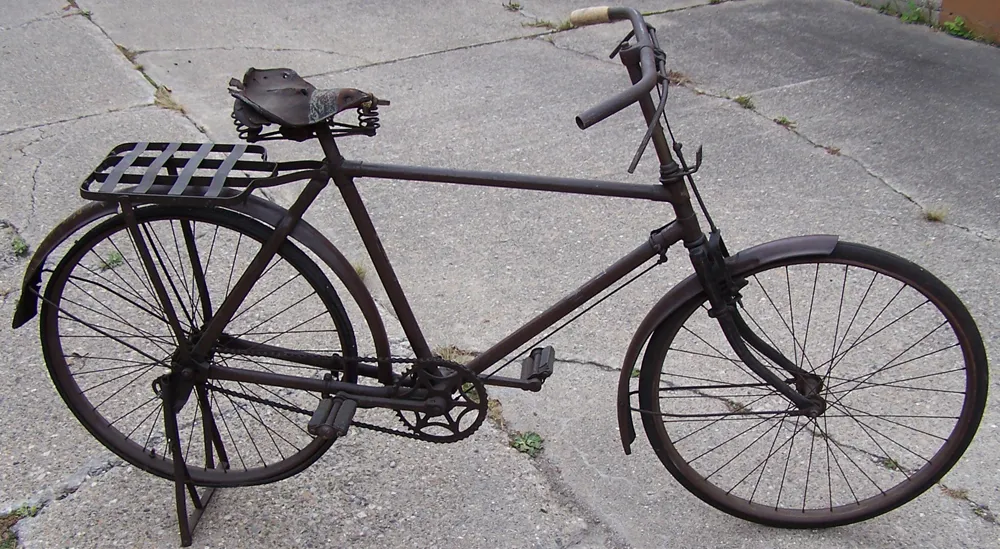
A WWII Japanese military bicycle, still with its original wartime rubber
Ironically, two nations that used bikes in the greatest numbers than most were two nations that haven’t actually used them in anger. These are the notable neutral nations of Sweden and Switzerland, each of which has rugged terrain and an independent spirit.
Sweden was among the forerunners of bicycle technology for military use, and the 27th Gotlandic Infantry Regiment replaced its cavalry complement with bicycle-mounted troops in 1901. This number increased and by 1942 the nation had six bicycle infantry regiments. From 1948 to 1952 however the Scandinavian nation began to decommission its bicycle infantry regiments, and by the 1980s only special bicycle rifle battalions remained. Most of the military bikes were sold off, and these are encountered in limited numbers on the private market.
Europe’s other main neutral power of Switzerland also has had a long history of military cycles. The Swiss appear to have followed the Swedes in adopting a Bicycle Infantry, which was introduced in 1905 and only phased out in 2001. The bikes that the mountain nation used were known for their high quality and durability.
“Switzerland had a major shift in 1988 or thereabouts, and disbanded the original bicycle corp.,” says Patrick Robb of Cold War Remarketing, Inc. He says that the country's military transformed the bicycle units, and this was in part to introduce a new and more modern bicycle. “This new bike was about $3,500 so it was significant. What they did was to introduce a training program where you had to buy the bike, and at the end of the training you were refunded for the cost for the bike.”
This updating resulted in Switzerland selling nearly all of its military bikes, and Robb says that his company was among the largest dealers of the famous Swiss Army Bikes. In the late 1990s to the around 2004 they were obtaining several hundred bikes at a time.
For the collector the glut of Swiss Army Bikes, and those of Sweden meant that there was a seemingly endless supply of bikes, but those days maybe - like the bicycle corps - long in the distance and passed.
That said, collectors can still find many bikes, but as with any collectible, caution needs to be taken. While bikes aren’t actually being outright faked, in part because the market for collectors of military bicycles isn’t that great, many bikes are not exactly what they appear to be.
